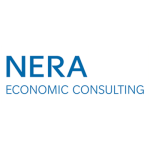Many multinational enterprises (MNEs) employ contract research and development (R&D) arrangements to structure their group-internal R&D activities from a transfer pricing (TP) perspective. These arrangements imply that the group company performing the contract R&D is remunerated on a relatively fixed basis (e.g. cost-plus), while the entrepreneurial upside potential and downside risks are allocated to the instructing party (usually the IP-owning company of the group).
Paradoxically, while similar types of arrangements can often be found between independent third parties, such remuneration forms are increasingly at risk in tax audits because of developments in the OECD's BEPS project – at least when they are not backed by sound analysis of facts and circumstances related to the specific R&D projects.
The challenge comes as a consequence of the evolution of interpreting the arm's-length principle regarding intangibles. Contract R&D services, by definition, involve some contributions of the contract R&D provider to the development, enhancement, maintenance, protection or exploitation (DEMPE) of unique and valuable intangibles. The OECD transfer pricing guidelines state that such contributions must be considered in the transfer pricing analysis and that, crucially, this might entitle the contract R&D company to some proportion of the overall (residual) profits attributable to the intangible rather than a fixed (routine) margin. To counter this claim, it is not enough that a senior manager of the R&D instructing party has the sole formal authority to ultimately sign off on R&D-related decisions and does the R&D funding. Instead, a more detailed analysis of the decision-making power is required.
Unfortunately, the OECD provides no helpful guidance on how to apply this principle in practice. There are no materiality thresholds to clarify exactly when some local contribution would change the character of the transaction from 'routine' to 'entrepreneurial'. This gives local tax authorities significant power to develop their own interpretation and challenge cost-plus arrangements in favour of a profit split, with significant consequences in larger tax disputes.
To mitigate such risk, we have developed and applied a best practice solution to properly analyse group-specific internal R&D processes. Internal managerial responsible, accountable, counsulted, and informed (RACI) charts and processes will often define who within virtual R&D teams will be responsible and accountable for decision-making, who will merely be consulted and who will only be informed on entrepreneurial decision-making. This definition of individual competences regarding initiation, execution, and decision-making usually provides a solid basis for a TP analysis. Thus, in alignment with the OECD, whereby contractual assignment of risk should be neglected in favour of considering group-internal R&D projects as co-creational in spirit, the roles and responsibilities of individual members can be translated into relative individual voting or decision-making power.
In the first step of the analysis, we assess the relative decision-making power of R&D team members. In the second step, we consider group-internal voting process rules at R&D milestone gateways, including veto rights and required majority thresholds, from simple majority, qualified majority or unanimity. Keeping the first two steps in mind, the final step involves properly identifying which legal entities have DEMPE contributions that are so weak that the respective legal entity is, in fact, never able to shape collective decision-making. Instead of being forced to bear entrepreneurial risk out of decisions it could not influence, at arm's length the legal entity would arguably prefer to operate as a low-risk service provider with a low but stable return, despite making some limited intangible DEMPE contributions.
In the case of a pharmaceutical MNE, whose contract R&D arrangement was challenged because of presumed high-value contributions of the local service entity, we applied the methodological approach explained above. We demonstrated that in a R&D network of nine contributing entities, five (including the one where the controversy arose) could be identified as making such limited contributions that they had effectively no impact on R&D project decision-making.
The local tax authorities ultimately accepted the cost-plus remuneration of the contract R&D service provider. The MNE used the insights gained from our analysis to amend the TP solutions regarding the entities providing high-value contributions. The remuneration of two of the four remaining entities were adjusted to a significantly higher non-routine cost-plus return; it was still deemed reasonable to expose them to lesser risks, whereas the established relative contributions of the two most important entities provided the key to apply a practical profit split solution.
In principle, the methodology proposed can be applied to all types of intangibles, including marketing intangibles.
NERA Economic Consulting
T: +49 69 710 447 502 and +49 69 710 447 508
E: yves.herve@nera.com and philip.de.homont@nera.com
W: www.nera.com













